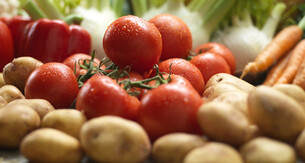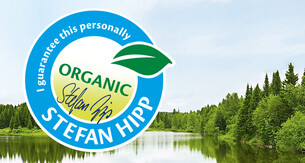Concerning the improvement of soil fertility, different methods have been tried out in the model project, for example using rock flour to bind ammonia, solid manure fertilization and other natural methods. Also, measures to support animal health, such as using effective micro-organisms or organic straw as litter, are used.
Many impacts affect the soil quality, especially in farming.
- Overdevelopment
- Chemical stress from industry and farming with long-term consequences on the health and performance capability of the soil.
- Physical stress from improper treatment (heavy machinery and tillage implements which destroy the sensitive soil complexes, leading to chemicals being needed to maintain yield).
- Working at wrong times.
- Loss of organic substance and thus of performance capability through the use of the wrong fertilisers, wrong crop rotation and wrong soil treatment.
- Impairment of groundwater through the wrong use of land.
The principle:
“Healthy soil – healthy plant – healthy person and healthy animal” is the motto, just as much as the principle of sustainability which is important for the preservation of healthy soil; sustainability in the balance of energy is key.



















